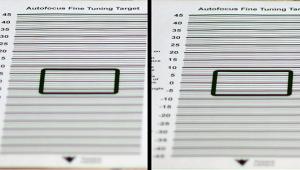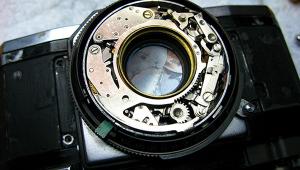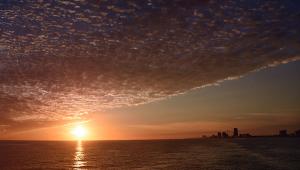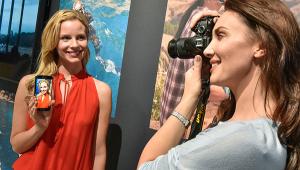What the Heck Is Color Temperature?: Why the Kelvin Scale Leaves Photographers Hot & Bothered

© Seth Shostak
White balance sounds like one of those concerns that vaporized with the advent of digital photography. In the days when film was king, you had to think about the color quality of light at the drugstore photo counter, long before you made any pics. You could either plan on shooting in the Sun, using a so-called “daylight” emulsion, or snapping your photos indoors, with a “T” or “tungsten” film stock.
These choices were both onerous and important. If you were caught outdoors with a camera loaded with a fresh roll of tungsten-balanced film, your options were limited. You could either daringly ignore the problem, and end up with pictures bluer than the cast of Avatar, or screw an orange-colored 80B filter onto your optic to correct things. Conversely, if you were forced to use daylight film with tungsten lamps, the only hope was to either put an exposure-robbing blue 80A filter over the lens, or blue gels in front of all the bulbs (and who had those?). Failure to take action resulted in wonky colors—especially for slides, for which there was no chance to remedy color balance during printing.
With digital, software can shift the relative intensity of the red, green, and blue components of your image ex post facto, and fix problems after the shoot. Nonetheless, you can (and really should) do your bit by twiddling the white balance in camera to closely approximate the color temperature of the scene, at least if you want a realistic rendering of the hues in your views.
Wait! Did I just say “color temperature”? I did, and that’s because that term has traditionally been used to describe the light sources for picture making, probably because a lot of the pioneers of photography were schooled in physics. But it’s a confusing term for many, and today’s light sources are poorly described by a temperature.
Here’s the backstory. More than a century ago, when the Spanish-American War dominated the news cycle, physicists were facing their own struggle to understand how things glow when heated up. Consider: You can look at a set of billiard balls, and while they all have different colors, those tints have nothing to do with their temperatures (which are, needless to note, all the same). But grab the eight ball, which is black—no color—and put it in a laboratory oven. Ramp up the heat. It will remain black until the temperature reaches about 900 degrees F, at which point it begins to glow a menacing dull red. That temperature equates to about 740 degrees K (or Kelvin). The Kelvin scale is considerably more convenient for scientists, because the coldest temperature that anything can be (which is -460 degrees F) is defined as being 0 K. No negative temperatures.
At 1,000 K, or 1,340 F, the eight ball glows salmon pink, and could serve as a flattering key light for photography. At 3,000 K, it’s the hot yellow color of an incandescent bulb, and at 6,000 K imitates the outer layers of the Sun—a daylight light source. Heat it to 30,000 K, and you’ll need to set your white balance to “ultraviolet,” as well as slather on some sunblock.
The color of hot light sources clearly depends on temperature—the hotter, the bluer. This may confuse the innocent, because photographers usually refer to candles and incandescent bulbs as “warm” light sources, whereas shady outdoor areas, mostly lit by blue sky, are considered “cool.” But in terms of temperature, it’s just the opposite: light bulbs are far cooler than the surface of the Sun. This odd nomenclature may derive from anthropology rather than physics. Most of us prefer firelight to blue light, and therefore denote reddish light sources as “warm,” which sounds nicer. Some pundits have suggested that our proclivity for reddish light is rooted in our distant past, when a nighttime fire gave our hairy ancestors security and the first cooked meals.
Clearly, setting the white balance (either manually or automatically) to the correct color temperature will help make the hues of your subject look accurate. At least, that was true back when nearly all lighting for photography was based on hot objects, either the Sun, bulbs, or scorched billiard balls. But things are different now. We’ll tell you more in next month’s column.

Seth Shostak is an astronomer at the SETI Institute who thinks photography is one of humanity’s greatest inventions. His photos have been used in countless magazines and newspapers, and he occasionally tries to impress folks by noting that he built his first darkroom at age 11. You can find him on both Facebook and Twitter.
















































